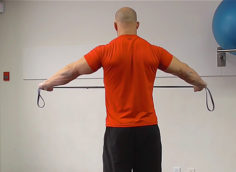The New 21s
The biggest difference between this version of 21s and the traditional method is that this protocol focuses more on the mid-range of the exercise.
Why? It has to do with a principle of physiology known as the "length-tension relationship" or the "length-tension curve." Put simply, this is the relationship between the length of the muscle fiber and the force the fiber produces at that length.
Muscles have the lowest potential to generate force when they're either fully elongated (stretched) or fully shortened (contracted). They generate the highest possible tension in the middle – halfway through the range of motion.
Another reason to focus on the mid-range is because it's the position where maximal loading of the biceps occurs. During any curl, the biceps are maximally loaded (stimulated) at the point in the ROM where the forearm is at a 90-degree angle with the load vector. If you're using free weights, gravity is the load vector, so the point of maximal loading is where the elbow reaches 90 degrees of flexion or when your forearm is parallel to the floor.
The farther away you move from a 90-degree angle with the load vector, the shorter the lever arm becomes and the less work your biceps have to do.
Now, let's put all that into action:
Biceps 21s: Mid-Range Focus
- 7 Mid-Range Partial Reps
- 7-Second Isometric Mid-Range Hold (with Wrist Pronation/Supination)
- 7 Full Range of Motion Reps




